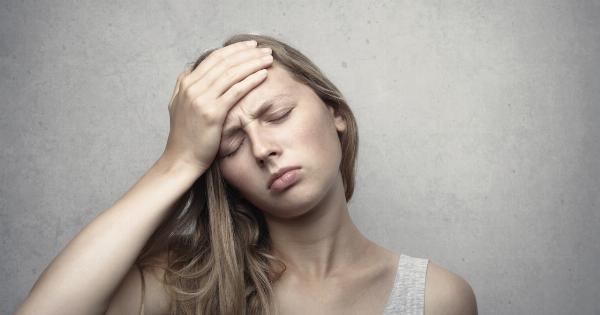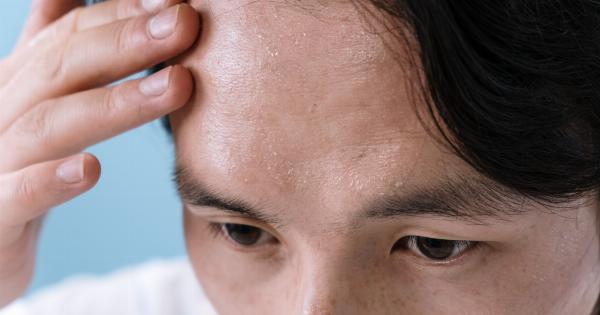Vertigo is a type of dizziness and a symptom of various medical conditions. People with vertigo feel a spinning or whirling sensation and may experience nausea, vomiting, headache, and loss of balance.
The feeling of vertigo can be brief or long-lasting, and it may occur spontaneously, as a result of certain movements, or in response to specific triggers. In this comprehensive guide, we will explore the different types of vertigo and their triggers, as well as methods for diagnosis and treatment.
Types of Vertigo
Vertigo can be classified into two main types:.
Peripheral Vertigo
The most common type of vertigo is peripheral vertigo. It is caused by a problem in the inner ear, which is responsible for maintaining our balance and sense of spatial orientation. Peripheral vertigo can be caused by:.
- Benign paroxysmal positional vertigo (BPPV) – which is the most common cause of vertigo
- Meniere’s disease – a condition that affects the fluid levels in the inner ear
- Vestibular neuritis – an infection of the vestibular nerve
- Labyrinthitis – an inflammation of the inner ear
Central Vertigo
Central vertigo is less common than peripheral vertigo, and it is caused by a problem in the central nervous system (CNS). The CNS includes the brain and spinal cord. Central vertigo can be caused by:.
- Migraines
- Brain tumors
- Strokes
Triggers of Vertigo
Vertigo can be triggered by various factors and situations. Knowing your triggers may help you avoid them and reduce your risk of experiencing vertigo. Here are some of the most common triggers of vertigo:.
Head Movements
BPPV, which is the most common cause of vertigo, is triggered by certain head movements, such as rolling over in bed, tilting the head, or looking up.
These movements cause small calcium carbonate crystals in the inner ear to become dislodged and move into the ear canal, where they can trigger vertigo symptoms.
Motion Sickness
Some people experience vertigo when they travel in a car, bus, boat, or plane. This is known as motion sickness, and it is caused by a conflict between the visual signals received by the eyes and the movement signals received by the inner ear.
Motion sickness can be prevented or reduced by taking anti-motion sickness medication, sitting in the front seat of a car or bus, or looking straight ahead and fixing your gaze on a distant object.
Anxiety and Stress
Vertigo can be triggered by anxiety and stress, which can cause the muscles to tighten and the blood vessels to constrict. This can affect the flow of blood and oxygen to the brain and inner ear, leading to dizziness and vertigo.
Stress reduction techniques, such as deep breathing, meditation, or yoga, may help reduce vertigo triggered by anxiety and stress.
Caffeine and Alcohol
Consuming large amounts of caffeine or alcohol can trigger vertigo symptoms in some people. Caffeine and alcohol can dehydrate the body and affect the blood vessels, leading to changes in blood pressure and circulation.
Diagnosis of Vertigo
Diagnosing the cause of vertigo can be challenging, as symptoms can be similar among different types of vertigo. Your doctor may perform a physical exam, review your medical history, and order tests to help pinpoint the cause of your vertigo.
Tests that may be performed include:.
- Videonystagmography (VNG) – a test that measures eye movements while the patient is experiencing vertigo
- Magnetic resonance imaging (MRI) – a test that uses powerful magnets and radio waves to create detailed images of the brain and inner ear
- Blood tests – to check for infections, inflammation, or other medical conditions that may cause vertigo
- Audiometry – a hearing test that can help detect inner ear problems that may cause vertigo
Treatment of Vertigo
The treatment of vertigo depends on the underlying cause of the symptoms. Treatment options may include:.
- Canalith repositioning maneuvers – a series of head movements that can reposition the calcium carbonate crystals dislodged in BPPV
- Vestibular rehabilitation therapy – a type of physical therapy that helps strengthen the muscles and improve balance and coordination
- Medications – such as antihistamines, benzodiazepines, or anticholinergics, that can reduce dizziness and nausea
- Surgery – in rare cases, surgery may be required to correct underlying structural problems in the inner ear or CNS
If you experience vertigo, it is essential to avoid hazardous activities such as driving or operating heavy machinery until your symptoms resolve or are successfully treated.
Conclusion
Vertigo is a common and debilitating symptom that can be caused by various medical conditions. Knowing the types of vertigo and their triggers can help you avoid situations that may worsen your symptoms.
If you experience vertigo, it is important to seek medical attention to determine the underlying cause and receive appropriate treatment.




























